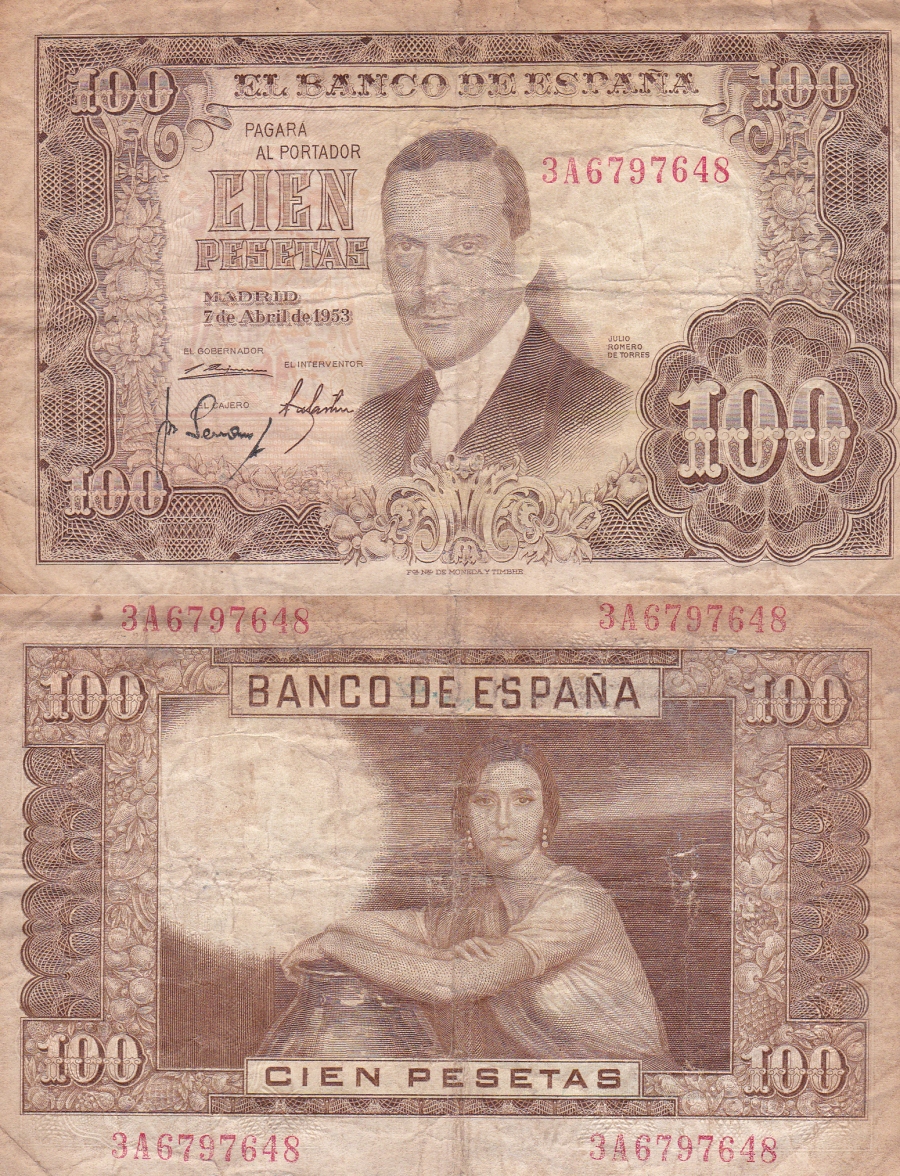
My first souvenir from Spain was a banknote. Back in 1972, my sister's boyfriend at the time had a fortnight in Torremolinos and gifted a One Hundred peseta note to me on his return, knowing that collecting foreign banknotes and coins was my childhood hobby. I remember I was quite taken by the images of the people on each side of the note. They looked so dignified and interesting in a foreign sort of way. Spain abandoned the peseta in 2002 when it joined the Euro (and achieved world-record sales of BMWs and Mercedes as bundles of black money which would otherwise soon be rendered worthless, were quietly withdrawn from under mattresses nationwide and laundered through car dealerships who had never had it so good).
So it came as quite a surprise when I first moved here and started to parlez with the locals, that the value of most assets, houses, cars and so on were still valued in pesetas.
This became a bit of a nuisance when I started working with a Spanish estate agent. Typically I'd be in the middle of a conversation between him and some English speaking clients, translating with my crude command of Spanish.
"How much would it cost to build a pool in this property?" They would ask, and I would translate to the agent.
"Two million pesates" would come the reply.
As a rule of thumb, a million pesetas is 6,000 euros, so I'd translate, calculate and tell the client 12,000 euros for the pool. A similar process would be required when folk asked me for quotes for kitchens, bathrooms, outbuildings etc. At times it became quite a challenge!
It was interesting though, travelling around the country while working with the estate agent. He had lots of property all over the place, mainly in Murcia but also from Valencia down to Almeria. One thing I'd often see in old houses were mains transformers. Spain used to use a 110V electricity supply, and apparently still does in some places. Although all electrical equipment sold today is designed to run on 220V, there are still houses out there which I have seen that have a mixture of 110V and 220V appliances used in the same house thanks to crude transformers that are often unboxed and look like rusty relics from a bygone age.
It wasn't just the volts and pesetas that gave me a jolt back to the past. Another thing I noticed was that although Spain adopted the metric system in the 1850s, it was still common to hear other units used to described land length and area. The first one of these I came across was the fanega, which the estate agent would use mainly when talking to farmers about the size of a plot in the country. My Spanish wasn't really up to diving into the conversation between two old guys rabbiting on at ten to the dozen in their thick regional, country accents, so I used to enlist the help of a young girl who worked in the office to figure this stuff out. She told me that a fanega was a unit of land area that was used in Spain in antiquity and that the funny thing about it was there was no consistent standard across the country. So a fanega in Murcia could be a different size altogether to a fanega in Andalucia. The web didn't help me much at the time (this was about 2005) but while researching this article, I came across a conversion chart that confirms this to be the case https://www.sizes.com/units/fanega.htm#land_area Just look at the Square Metre column and the wide range of different values across Spain. It's a wonder they managed to do any deals at all!
And the fanega wasn't the only one. Another measure I came across while working there was the tahúlla which was used more in the north east of Murcia up towards Valencia way. Again, at the time I couldn't find much out about this online but I've just checked and the tahúlla possibly dates back to Islamic times, but is still being used today by some folk in Spain who can't get their heads around hectares. For the record, a tahúlla is equivalent to 1118 metres squared.
I thought I'd write about the units used in Spain as many of them would be unfamiliar to lot of my readers. However one unit used here will be familiar to everyone, even if the word used is different. Like most countries in the world, Spain measures TV screens and monitors in 'pulgadas' which means inches. You can't keep a good unit down!